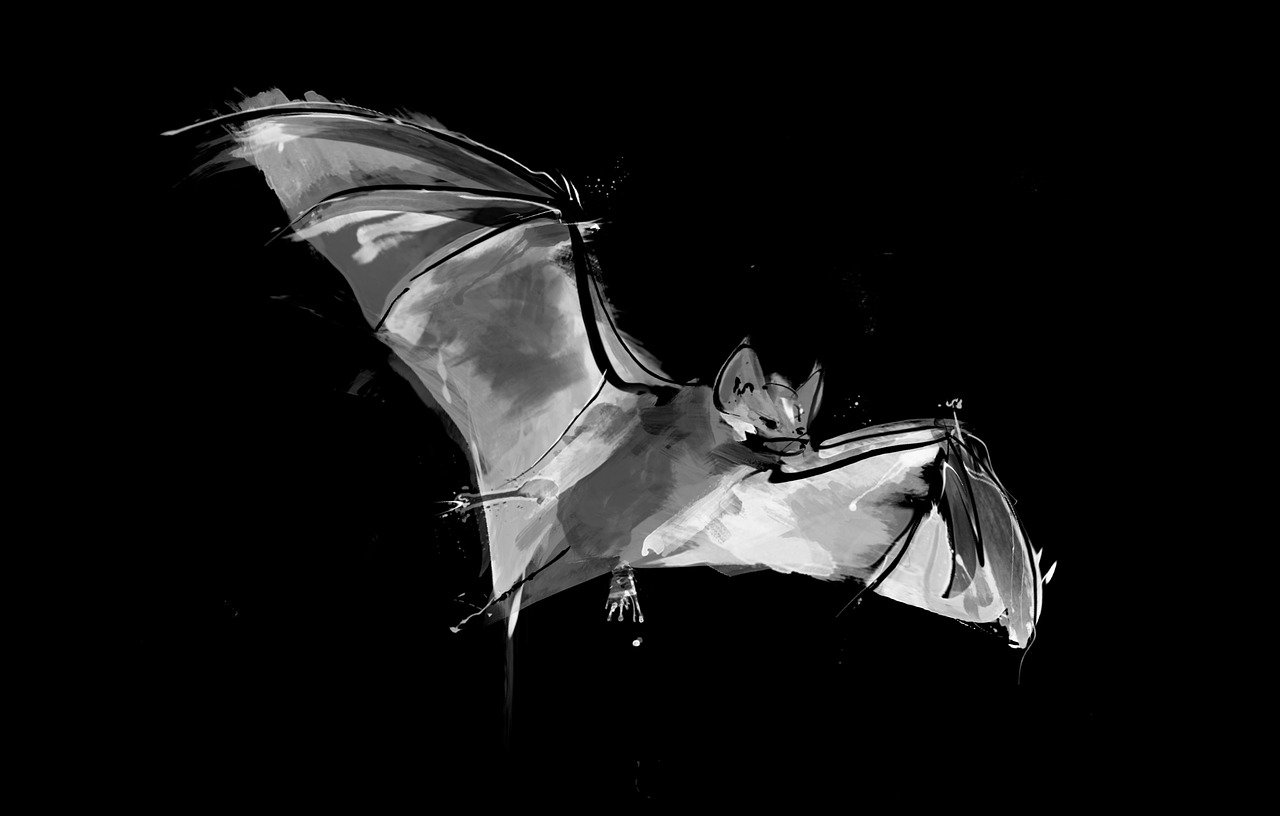Ghost-faced Bat: Mormoops Megalophylla

The ghost-faced bat is known for its unique look and tendency to roost in large populations. Like many other bats, the ghost-faced species rely on insects for food and roost in warm desert shrubs. This bat is typically found in southern North America and Central America.
Learn More: Desert Bat Species
Description Of The Ghost-faced Bat
The ghost faced bat is medium-sized and is equipped with a reddish-brown to dark brown coat.
They have large, rounded ears that are joined across the brow. From the chin, leaf-like appendages protrude. From the uropatagium, the tail projects dorsally. No sexual dimorphism is observed, but for women, the basal metabolic rate is lower. 1Go To Source animaldiversity.org -“Mormoops megalophylla ghost-faced bat”
Ghost-faced Bat Behavior
Ghost-faced bats are an insectivore preying primarily on Lepidoptera (moths). They use bi-sonar echolocation vocalizations to locate prey while flying. The bat will swoop near trails and roads at the forest edge to within 3 feet of the forest floor in vegetation in order to catch the prey. With a large pouch formed by its large tail membrane, insects are frequently captured in the air, often using a wing to funnel an insect into the pouch.
In large colonies, the Ghost-faced bat roosts mostly in warm caves. At the entrance to less sheltered, windy caves and shafts within the forest, small groups and individuals occasionally find roosting. Ghost-faced bats remain in the day’s roost until after sunset, a strictly nocturnal animal. They enter and leave the roost during several feeding expeditions throughout the night, returning to the roost shortly before sunrise. 2Go To Source fs.usda.gov -“Antillean Ghost-Faced Bat”
Reproduction Habits Of Ghost-faced Bats
Ghost-faced females are monestrous at the beginning of the rainy season, typically carrying a single pup each year (having one mating cycle annually). In January and February, mating occurs, and gestation appears to last for 60 days. Ghost-faced Bats pollinate numerous plants, like other forest bats, and are responsible for 70-95% of all seeds dispersed, playing a vital role in forest regeneration.
Ghost-faced Bat Roosting Populations
Although they may congregate at a roosting site in large numbers (as many as 500,000 people), these bats do not form the compact clusters typical of many other species. They tend to space themselves across the roost ceiling approximately 15 cm apart. Therefore, to house large numbers of these bats, larger sites are required. The cave myotis (Myotis velifer) and the Brazilian free-tailed bat include other species that often cohabit roosting sites with Mormoops megalophylla, and generally vastly outnumbers them. 3Go To Source depts.ttu.edu -“GHOST-FACED BAT Mormoops megalophylla Peters 1864”
Habitat Of The Ghost-faced Bat

This species is found in various habitats in oak-woodland habitats, including desert scrub, mixed boreal-tropical forests, tropical rainforests, and riparian regions with mature cottonwood, sycamore, and willow.
Ghost-faced bats primarily roost in old mine shafts or inside a building’s attic. In areas that minimize ventilation and maximize heat retention, nursing mothers roost. The deepest and warmest (96.8°F) areas of occupied caves are usually the reproduction sites. Males and non-reproducing females use caves separate from those used by nursing females. Non-reproductive females use indoor chambers with a temperature of 92.1-93.5°F.
Soon after dark, M. megalophyll emerges and flies in dense, fast-moving formations. Once out of the roost, individuals fly along canyons and arroyos quickly to foraging sites. These bats are strong, fast fliers that travel at relatively high altitudes to feeding sites.
Foraging typically takes place over standing water. The stomach and intestinal contents gathered from four ghost faced bat specimens indicate that this species feeds on large-body moths. 4Go To Source tpwd.texas.gov -“Ghost-faced Bat (Mormoops megalophylla)”
Ghost-faced Bat Range
The distribution of the ghost faced bat tends to be in the southern regions of north and central America. Places that ghost faced-bats are commonly seen include:
- Arizona
- Texas
- New Mexico
- Mexico5Go To Source desertmuseum.org -” Animal Fact Sheet: Peters Ghost-faced bat”
Diet Ghost-faced Bats
The ghost-faced bat species feed on small insects. Foraging occurs during the night, and the bats use echolocation to locate prey mid-flight. Once an insect has been found, a ghost-faced bat will swoop down capture the insect.
Threats To The Ghost-faced Bat Species
Ghost-faced bats are at risk of localized extinction from cave collapse, vandalism, and other human disturbance, like many cave-dwelling species. In parts of Central America, cave tourism is causing some localized conservation problems.
Human disturbance to the cave roosts will cause the bats to leave their roost and seek a more seclusive location. The new roost location may be less desirable and lead to a lack of food and water resources. 6Go To Source batcon.org -“GHOST-FACED BAT”
Sources:
- Steinway, M. 2000. “Mormoops megalophylla” (On-line), Animal Diversity Web. Accessed January 14, 2021 at https://animaldiversity.org/accounts/Mormoops_megalophylla/
- Mowbray, Alan. “El Yunque National Forest – Nature & Science.” United States Department Of Agriculture, USDA Forest Service, www.fs.usda.gov/detail/elyunque/learning/nature-science/?cid=fsbdev3_043049. Accessed 14 Jan. 2021.
- Schmidly, David, and Robert Bradley. “A Species Account of the Ghost-Faced Bat (Mormoops Megalophylla) | Mammals of Texas | Natural Science Research Laboratory | TTU.” Texas Tech University, University of Texas Press, www.depts.ttu.edu/nsrl/mammals-of-texas-online-edition/Accounts_Chiroptera/Mormoops_megalophylla.php. Accessed 14 Jan. 2021.
- “Ghost-Faced Bat (Mormoops Megalophylla).” Texas Parks & Wildlife, TPWD, tpwd.texas.gov/huntwild/wild/species/ghostfaced. Accessed 14 Jan. 2021.
- “Ghost Faced Bat Fact Sheet.” Arizona-Sonora Desert Museum, www.desertmuseum.org/kids/bats/ghost_faced_bat.php. Accessed 14 Jan. 2021.
- Bat Conservation International. “Ghost-Faced Bat.” Bat Conservation International, Bat Conservation International, 2 Nov. 2020, www.batcon.org/article/ghost-faced-bat.
